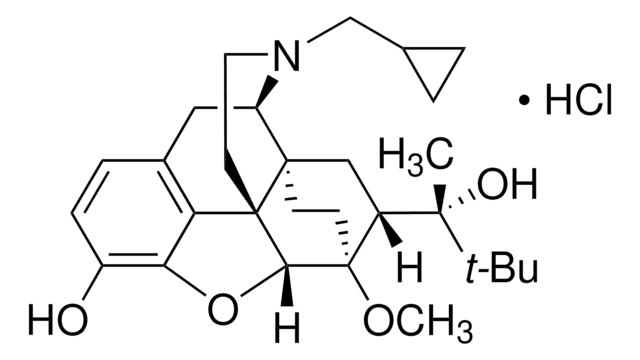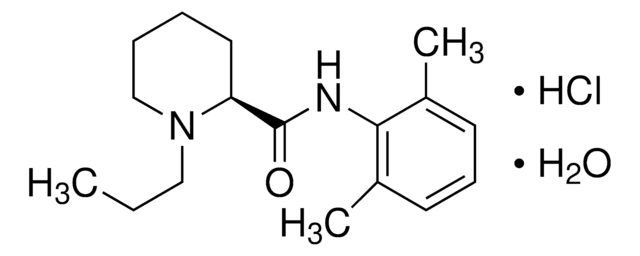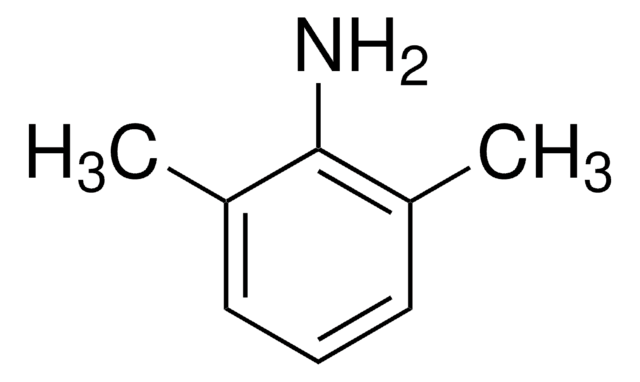1078507
USP
Bupivacainhydrochlorid
United States Pharmacopeia (USP) Reference Standard
Synonym(e):
Bupivacain -hydrochlorid Monohydrat, 1-Butyl-N-(2,6-dimethylphenyl)-2-piperidincarboxamid -hydrochlorid Hydrat
About This Item
Empfohlene Produkte
Qualität
pharmaceutical primary standard
API-Familie
bupivacaine
Hersteller/Markenname
USP
Methode(n)
HPLC: suitable
gas chromatography (GC): suitable
Anwendung(en)
pharmaceutical (small molecule)
Format
neat
Allgemeine Beschreibung
Anwendung
- Bupivacaine Hydrochloride Injection
- Bupivacaine Hydrochloride in Dextrose Injection
- Bupivacaine Hydrochloride and Epinephrine Injection
- Fentanyl Citrate and Bupivacaine Hydrochloride Compounded Injection
- Ropivacaine Hydrochloride
Hinweis zur Analyse
Sonstige Hinweise
Ähnliches Produkt
Signalwort
Danger
H-Sätze
Gefahreneinstufungen
Acute Tox. 1 Inhalation - Acute Tox. 2 Dermal - Acute Tox. 2 Oral
Lagerklassenschlüssel
6.1A - Combustible acute toxic Cat. 1 and 2 / very toxic hazardous materials
WGK
WGK 3
Flammpunkt (°F)
Not applicable
Flammpunkt (°C)
Not applicable
Analysenzertifikate (COA)
Suchen Sie nach Analysenzertifikate (COA), indem Sie die Lot-/Chargennummer des Produkts eingeben. Lot- und Chargennummern sind auf dem Produktetikett hinter den Wörtern ‘Lot’ oder ‘Batch’ (Lot oder Charge) zu finden.
Besitzen Sie dieses Produkt bereits?
In der Dokumentenbibliothek finden Sie die Dokumentation zu den Produkten, die Sie kürzlich erworben haben.
Kunden haben sich ebenfalls angesehen
Unser Team von Wissenschaftlern verfügt über Erfahrung in allen Forschungsbereichen einschließlich Life Science, Materialwissenschaften, chemischer Synthese, Chromatographie, Analytik und vielen mehr..
Setzen Sie sich mit dem technischen Dienst in Verbindung.








